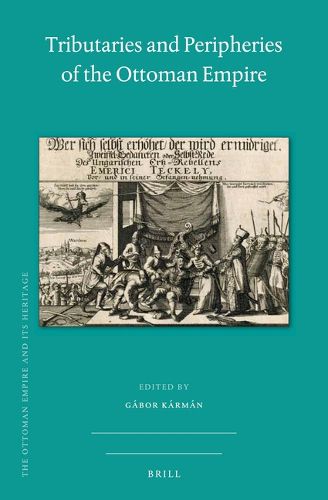Readings Newsletter
Become a Readings Member to make your shopping experience even easier.
Sign in or sign up for free!
You’re not far away from qualifying for FREE standard shipping within Australia
You’ve qualified for FREE standard shipping within Australia
The cart is loading…






Tributaries and Peripheries of the Ottoman Empire offers thirteen studies on the relationship between Ottoman tributaries with each other in the imperial framework, as well as with neighboring border provinces of the empire’s core territories from the fifteenth to the eighteenth centuries. A variety of surveys related to the Cossack Ukraine, the Crimean Khanate, Dagestan, Moldavia, Ragusa, Transylvania, Upper Hungary and Wallachia allow the reader to see hitherto less known subtleties of the Ottoman administration’s hierarchic structures and the liberties and restrictions of the office-holders’ power. They also shed light upon the strategies of coalition-building among the elites of the tributaries as well as the core provinces of the border zones, which determined their cooperation, but also the competition between them.
Contributors include: Janos B. Szabo, Ovidiu Cristea, Tetiana Grygorieva, Klara Jako, Gabor Karman, Dariusz Kolodziejczyk, Natalia Krolikowska-Jedlinska, Erica Mezzoli, Viorel Panaite, Radu G. Paun, Ruza Rados Curic, Balazs Sudar, Michal Wasiucionek.
$9.00 standard shipping within Australia
FREE standard shipping within Australia for orders over $100.00
Express & International shipping calculated at checkout
Tributaries and Peripheries of the Ottoman Empire offers thirteen studies on the relationship between Ottoman tributaries with each other in the imperial framework, as well as with neighboring border provinces of the empire’s core territories from the fifteenth to the eighteenth centuries. A variety of surveys related to the Cossack Ukraine, the Crimean Khanate, Dagestan, Moldavia, Ragusa, Transylvania, Upper Hungary and Wallachia allow the reader to see hitherto less known subtleties of the Ottoman administration’s hierarchic structures and the liberties and restrictions of the office-holders’ power. They also shed light upon the strategies of coalition-building among the elites of the tributaries as well as the core provinces of the border zones, which determined their cooperation, but also the competition between them.
Contributors include: Janos B. Szabo, Ovidiu Cristea, Tetiana Grygorieva, Klara Jako, Gabor Karman, Dariusz Kolodziejczyk, Natalia Krolikowska-Jedlinska, Erica Mezzoli, Viorel Panaite, Radu G. Paun, Ruza Rados Curic, Balazs Sudar, Michal Wasiucionek.